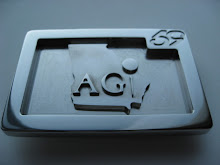By: B. J. Hathaway
Medicus Certified Instructor
In the U.S. today there are approximately 37 million golfers. In his 1998 article “Back pain in golfers: etiology and prevention”, (Journal of Sports Chiropractic & Rehabilitation) Dr. David Seaman writes:
There are an estimated 25 million golfers in the United States, and with the recent surge in the sport’s popularity, that figure should exceed 27 million by the year 2000. It is also estimated that 5-15% of touring professionals, and an even greater number of amateurs, will develop low-back problems.
This article discusses the biomechanics of the modern golf swing, its potential for placing the lower back at risk for injury, and the potentially modifiable factors that contribute to the prevalence of chronicity of golf-related injuries.
Today’s standard golf swing, imitated by millions and characterized by maximal torso rotation in the backswing and follow-through, predisposes the spine to painful injury. Golfers are often taught that maximal spinal rotation is needed to ensure maximum velocity at club/ball impact and maximum hitting distance. However, studies have demonstrated that a shorter backswing position with less torso rotation is more effective and generates far less potential for injury.
Golf injuries develop primarily because the golf swing represents a series of ineffective, injury-promoting movements. It is important that doctors of chiropractic understand the true biomechanics of the golf swing so they can recommend a more appropriate, “back friendly” swing to their patients.
Dr. Seaman is right. If your chiropractor is interested in keeping you healthy, your teaching professional should be, too.
The Golfing Machine by Homer Kelley teaches that there are four sources of power in the golf swing, known as Power Accumulators- or Power Sources-none of which are based on torso rotation.
The turning of the body, or “pivot,” should be a reaction to where the hands need to go. This is referred to as a “hand controlled pivot” in The Golfing Machine. Many teachers believe that the rotation of the body controls the hands. This is fine if you want to hit less than your maximum distance potential and create room for injury.
The geometry and physics of the golf swing, studied by all Authorized Instructors of The Golfing Machine and Medicus Certified Instructors, dictates that the hands always have a destination. Give your hands an assignment, where to go and what to do, then have them complete that assignment. The body should play a supporting role, and not vice-versa.
Educate your hands on their proper role in the golf swing. For more information contact Medicus Golf to find a Certified Instructor near you.
B. J. Hathaway is one of only 98 teachers worldwide designated to hold a “Bachelors in Golf Stroke Engineering.”
AGI
Improve your game







No comments:
Post a Comment